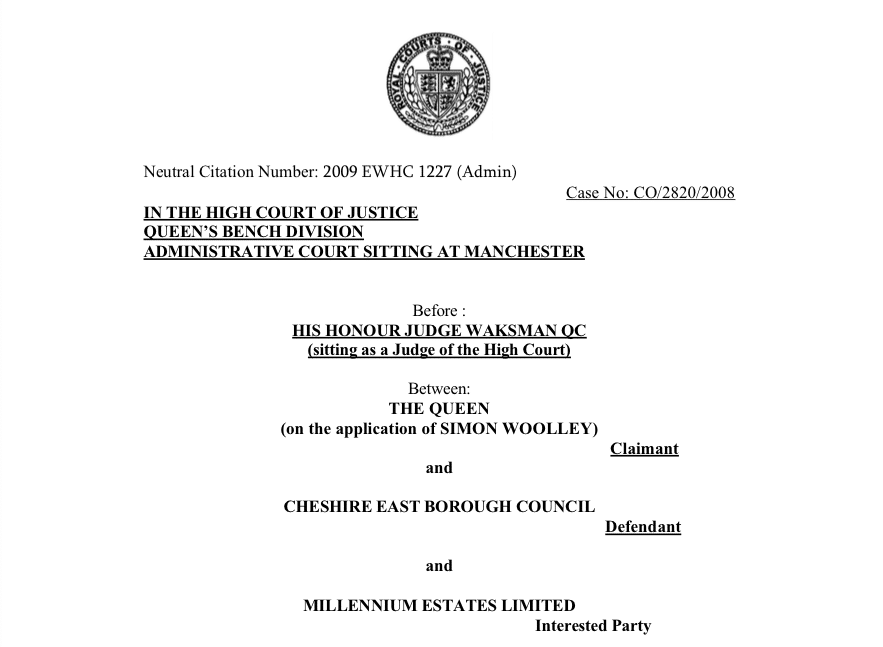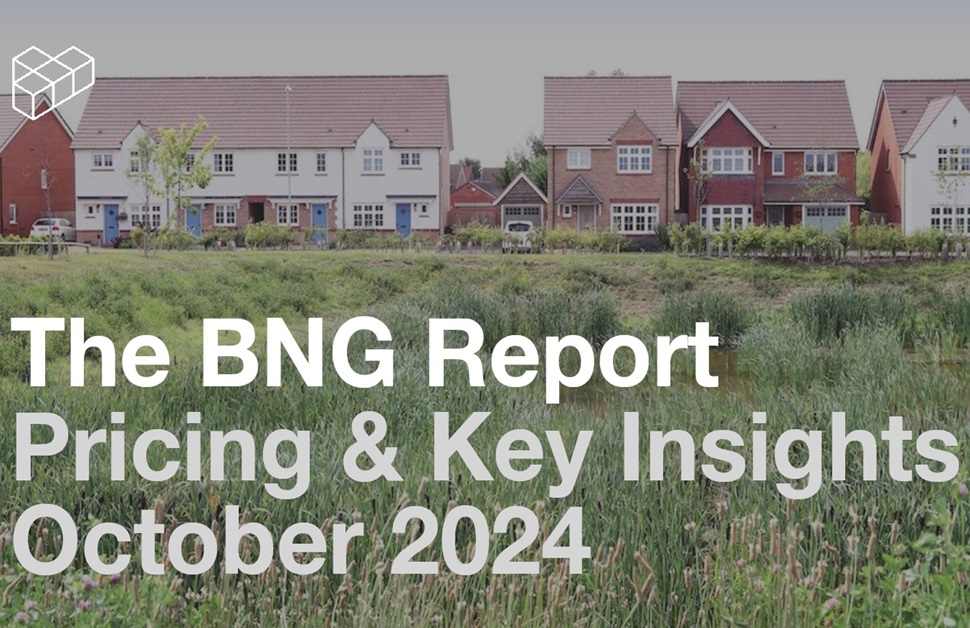
European Protected Species (EPS) and the planning process
2015 marks 6 years since the historic judgement by His Honour Judge Waksman QC in the High Court case of R (on the application of Simon Woolley) v Cheshire East Borough Council. For the first time, this case set out the legal duty of a Local Planning Authority (“LPA”) when determining a planning application for a development which may have an impact on European Protected Species (EPS). This position was further clarified in Supreme Court in the case of R (Vivienne Morge) v Hampshire County Council in 2011.
The legal duty had been in existence since the publication of the Conservation (Natural Habitats Etc.) Regulations in 1994[1]. However the duty was only partially understood and patchily applied by Local Authorities until the Woolley judgement in 2009. The outcomes of the Woolley and Morge cases have resulted in firm internal guidance to LPAs on the application of the duty.
[1] Now amended as the Conservation of Habitats and Species Regulations 2012 which transpose the requirements of the Habitats Directive (92/43/EEC) into UK law.
Why can’t my LPA condition species surveys?
Despite this, there is still a considerable amount of misunderstanding of the LPA’s duty by developers (and their agents, such as architects). Now six years after the Woolley case judgement, there is still a persistent misconception by some architects, planners and developers, that the surveys of these species can be the subject of a planning condition.
This article is for guidance and is aimed to provide clear advice about the legal duty to help our clients understand the ecological recommendations made by us and other consultants regarding these species, but it does not constitute legal advice.
What are European Protected Species?
European Protected Species (EPS) are species of plants and animals (other than birds) which are protected by law throughout the European Union. EPS are listed in Annexes II and IV of the European Habitats Directive.
The lists include several hundred species of plants and animals. (They exclude fungi, lichens and birds.)
The following table contains a list of EPS that are known to occur in the UK.
Table 1 – List of European protected species: animals and plants
| Common name | Scientific name |
| Animals | |
| Horseshoe Bats | Rhinolophidae |
| Other Bat Species | Vespertilionidae |
| Dolphins, porpoises and whales (all species) | Cetacea |
| Dormouse | Muscardinus avellanarius |
| Fisher’s Estuarine Moth* | Gortyna borelii lunata |
| Great Crested (or Warty) Newt | Triturus cristatus |
| Large Blue Butterfly | Maculinea arion |
| Lesser Whirlpool Ram’s-horn Snail* | Anisus vorticulus |
| Marine Turtles | Caretta carettaChelonia mydasLepidochelys kempiiEretmochelys imbricataDermochelys coriacea |
| Natterjack Toad | Bufo calamita |
| Otter | Lutra lutra |
| Pool Frog* | Rana lessonae |
| Sand Lizard | Lacerta agilis |
| Smooth Snake | Coronella austriaca |
| Sturgeon | Acipenser sturio |
| Wild Cat | Felis silvestris |
| Plants | |
| Creeping Marshwort | Apium repens |
| Early Gentian | Gentianella anglica |
| Fen Orchid | Liparis loeselii |
| Floating-leaved water Plantain | Luronium natans |
| Lilarney Fern | Trichomanes speciosum |
| Lady’s Slipper | Cypripedium calceolus |
| Slender Naiad | Najas flexilis |
| Shore Dock | Rumex rupestris |
| Yellow Marsh Saxifrage | Saxifraga hirculus |
| * These species were added to Schedule 2 (European protected species of animals) of the Conservation (Natural Habitats &c.) Regulations 1994 in 2008. | |
Arbtech’s principal, Chris Formaggia, says:
It is worth noting that all native UK bat species are included on that list.
Nevertheless, when I’m dealing with cases where any European Protected Species may be affected, I always inform my clients that their local planning authority has a statutory duty to have regard to the requirements of the Habitats Directive in the exercises of its functions. Further, the Directive’s provisions are clearly of material relevance to the LPA in reaching planning consent decisions, and these must be made, by the LPA, in a manner which takes them fully into account.
The LPA’s Legal Duty
The duty is two-fold:
- a) The Woolley case established that it was not sufficient for your LPA simply to make reference to the existence of the regulations as an informant on the planning consent. It also established that your LPA could not discharge its duty by simply forming a planning condition that calls for you (the applicant) to obtain an appropriate licence from the Statutory Nature Conservation Organisation [SNCO] (Natural England in England; Natural Resources for Wales in Wales; Scottish Natural Heritage in Scotland and Northern Ireland Environment Agency in Northern Ireland). Such an approach would not constitute “engaging” with the Directive, which is the obligation of your LPA.
- b) For the same reasons as a); your LPA would not be engaging with the Directive were it to make the survey that determines the status of an EPS on a site the subject of a Planning Condition.
LPAs therefore, are not in a position where they can condition EPS surveys with legal defensibility.
So what are the three tests?
In deciding whether to grant or refuse a licence application to permit a proposal impacting upon EPS, the SNCO must consider three Tests under the Regulations:
- A licence can be granted for the purposes of “preserving public health or public safety or other imperative reasons of overriding public interest including those of a social or economic nature and beneficial consequences of primary importance for the environment”.
- The SNCO shall not grant a licence unless they are satisfied “that there is no satisfactory alternative”.
- The SNCO shall not grant a licence unless they are satisfied “that the action authorised will not be detrimental to the maintenance of the population of the species concerned at a favourable conservation status in their natural range.”
The Wolley and Morge cases both clearly establish that the LPA must properly evaluate, at the time of its planning consideration, whether the SNCO is likely to grant a licence.
Judge Waksman’s consideration was “In my view that engagement involves a consideration by the authority of those provisions and considering whether the derogation requirements might be met. This exercise is in no way a substitute for the licence application which will follow if (planning) permission is given. But it means that if it is clear or perhaps very likely that the requirements of the Directive cannot be met because there is a satisfactory alternative or because there are no conceivable “other imperative reasons of overriding public interest” then an authority should act upon that, and refuse permission. On the other hand if it seems that the requirements are likely to be met, which in the vast majority of cases will be true, then the authority will have discharged its duty to have regard to the requirements and there would be no impediment to planning permission on that ground. If it is unclear to the authority whether the requirements will be met, it will just have to take a view whether in all circumstances it should affect the grant or not. But the point is that it is only by engaging in this kind of way that the authority can be said to have any meaningful regard for the Directive.”
My Advice to Clients
Our ecological consultants fully take the legal duty of your LPA into account. We often get asked to alter our reports, for example to recommend that an EPS survey be made the subject of a planning condition. This article hopefully explains why we must decline to make such a recommendation.
When we recommend further surveys or assessment for EPS, it is so that we are in a position to provide your LPA and the relevant SNCO with sufficient information to consider the three derogation tests.
If we were to not do this, then there is a strong likelihood that your LPA will reject our report and its findings.
In summary then, when formulating our ecological advice to clients, we not only consider your planning application but we also consider the independent statutory wildlife legislation. We shape our advice to not only win you your planning application consent, but also to help you avoid any risk of breaching wildlife legislation.
If you have any further questions or comments, please feel free to use the comments section below, and of course you can phone us or send us an e-mail.
I hope you found this useful.
-Chris.





